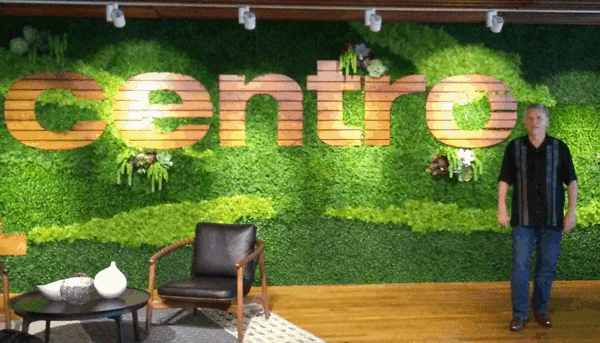
 Centro’s new Chicago head office is in the Sullivan Center, built in 1899 as a department store but renovated and renamed in 2007 to honour its original architect Louis Sullivan—who not only designed the world's first sky-scraper, but also coined the phrase, "Form follows function."
Centro’s new Chicago head office is in the Sullivan Center, built in 1899 as a department store but renovated and renamed in 2007 to honour its original architect Louis Sullivan—who not only designed the world's first sky-scraper, but also coined the phrase, "Form follows function."
You learn this riding the elevator to the 6th floor, by reading the historical plaques placed over the illuminated floor numbers above the door. What he meant by it is that you have to thoroughly understand what you're trying to achieve (the function) before you structure your plan for achieving it (the form).
Update: Since this original posting, Centro DSP has been rebranded as Basis DSP, an integrated programmatic and media management platform.
That's a theme that was continually reinforced during the two days of intensive training I attended at #CentroCertified on May 15th and 16th, 2017. And so... I'm going to make it the theme of this post.
When the doors open on the 6th floor, you're greeted by an impressive expanse of bright and cheerful work space—70,000 square feet on a single floor. There's room to grow here, and Centro clearly has plans to do so.

Whether you call it goals, strategies or KPIs, a lot of the learning in the Centro Certified DSP Training Program had to do with thinking through what you're trying to achieve, before building out your form of attack.
This message was loud and clear, for instance, when Customer Success Manager Kallie Franke talked about mapping out a hierarchical structure and a consistent naming convention from the brand level on down. This becomes important later, she pointed out, when your campaign has expanded to multiple tactics and targeting variations, and you then want to test different optimizations—while still being able to trace back where you started from. Kallie is apparently kooky about cookies; so she used the example of an online cookie shop to illustrate these points.
Nell McGann, another Centro CSM, returned to the same theme in her presentation on building data-driven campaigns. There is a gold mine of data accessible in Centro DSP, but without insightful pre-planning, the range of options can lead an RTB novice into overkill. The big takeaway: "Focus on your objective and actionable KPI before choosing inventory and data for your campaign."
Another reinforcement of the need for thinking before building came through in CSM Matt Kershaw's detailed walk-through of Custom Segments. This was a fascinating look at how to "craft your perfect audience." But he emphasized it's essential to plan ahead carefully based on the advertiser's goals, because each segment can add to the cost and complexity of the campaign—and you also have to be aware that it can take time for custom segments to be populated.
It's essential to plan ahead carefully based on the advertiser's goals.
Even in the process of optimizing, we were reminded in CSM Jeff Poteracki's segment of the training, you have to keep your eye on the original goals and KPIs. In the Centro RTB platform, the optimization capabilities are so extensive that it's possible for the inexperienced practitioner to over-optimize in a way that loses sight of the intended target.
My favourite instance of "form follows function" thinking, however, was when Matt Davis, Centro's VP Platform Client Development, spoke of the feature roadmap for 2017. Without going into details (you can find them on the Centro blog, I would say it's clear that function is driving the future form of Centro DSP.
It was in Matt Davis' presentation that the most quotable quote of the two-day session came out. Expounding on predictions for the future of programmatic, he declared in Prediction #5, "An Advertising Renaissance Will Commence. Creativity will once again find its place in an increasingly programmatic world."
I endorse that sentiment and agree wholeheartedly with the prediction. While many aspects of digital marketing will continue to become more automated, there is an urgent need for the knowledge we gain in this process about the real people in our audiences, to be fed back into the development of creative that truly resonates with them. I believe that is the renaissance that is already emerging within the industry.
And my own prediction is that the future shape of the advertising industry, and the continued dominance of digital, will depend on how well its form continues to reflect the function of connecting people with brands.

Comments